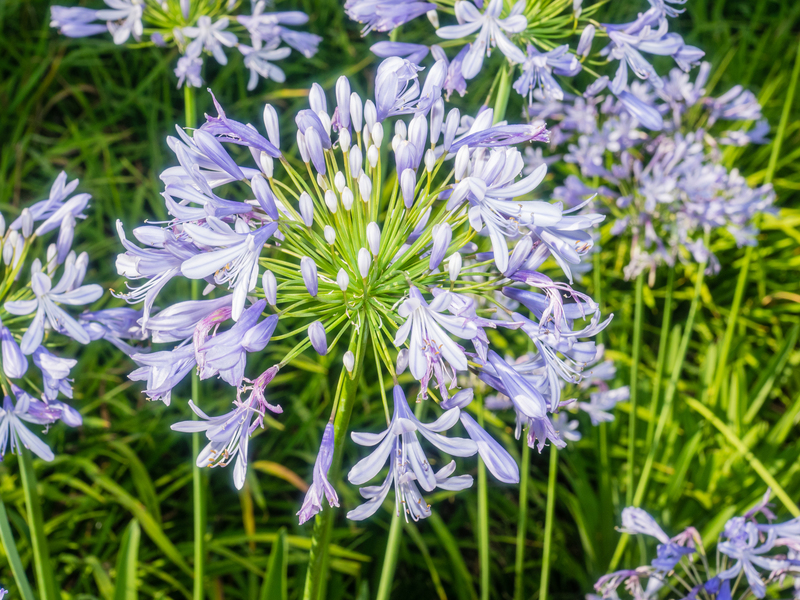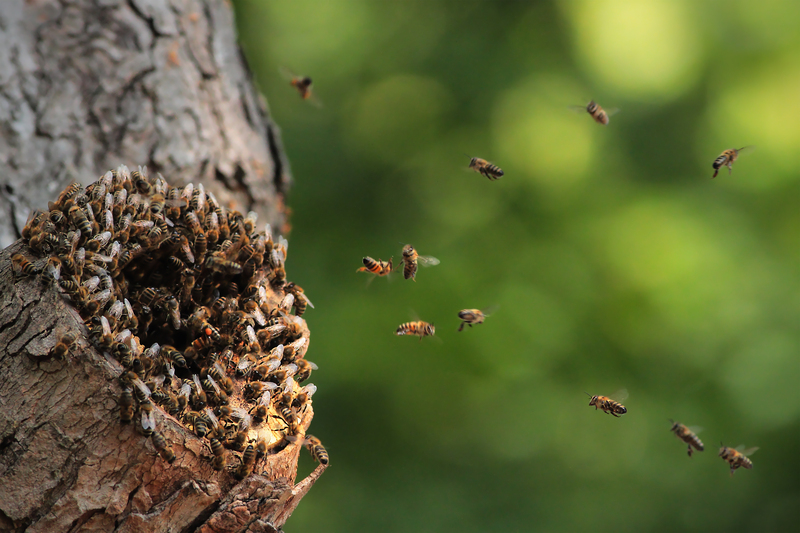Revitalize Your Green Thumb with Herb Gardening
Posted on 31/05/2025
Revitalize Your Green Thumb with Herb Gardening: A Comprehensive Guide
Are you ready to awaken your inner gardener and bring fresh flavor, fragrance, and beauty to your home? Herb gardening is more than just a pastime--it's an art that promotes well-being, culinary exploration, and sustainability. Whether you're new to gardening or looking to upgrade your existing skills, this comprehensive guide will show you how to revitalize your green thumb with herb gardening!

Why Start an Herb Garden?
- Fresh Flavors at Your Fingertips: Nothing beats the zest of fresh herbs like basil, rosemary, or mint in your favorite recipes.
- Affordable & Eco-friendly: Growing herbs reduces reliance on store-bought, packaged greens, saving money and reducing waste.
- Year-Round Enjoyment: Many herbs can be grown indoors, offering greenery and utility all year round.
- Therapeutic Benefits: The act of nurturing plants boosts mood, reduces stress, and fosters mindfulness.
- Stunning Aesthetics: Herb gardens add vibrant color and fragrance to kitchens, patios, and landscapes.
Choosing the Right Herbs for Your Garden
The journey to herb gardening success starts with selecting the appropriate herbs. Your choices should reflect your culinary preferences, climate, and gardening setting. Here's a list of popular herbs to grow:
- Basil: Ideal for Mediterranean dishes, pestos, and salads.
- Rosemary: Adds robust flavor to roasted meats and breads.
- Parsley: Universal garnish with a fresh, delicate taste.
- Mint: Perfect for teas, desserts, and summer drinks.
- Thyme: Earthy flavor for soups, stews, and vegetables.
- Cilantro: Essential for salsas, curries, and Asian-inspired cuisine.
- Dill, Oregano, Sage, Chives: Each offers unique culinary and medicinal properties.
Tip: Start with 3-5 herbs you use most often in your cooking for maximum enjoyment and convenience!
Herb Garden Setup: Indoors vs. Outdoors
You can revitalize your green thumb with a herb garden whether you have acres of land or just a sunny windowsill. Let's explore your options:
- Indoor Herb Gardening:
- Lighting: South or west-facing windows provide the six hours of sunlight most herbs need. Supplemental grow lights work in dim spaces.
- Containers: Use pots with drainage holes. Ceramic, clay, or plastic--pick your favorite style.
- Soil: High-quality potting mix ensures proper drainage and nutrition.
- Watering: Indoor herbs require regular watering but hate soggy soil. Water when the top inch feels dry.
-
Outdoor Herb Gardening:
- Garden Bed or Pots: Both work well. Raised beds offer great drainage and easy access.
- Sun Exposure: Most herbs thrive in 6-8 hours of direct sunlight per day.
- Soil Preparation: Loosen soil and enrich with compost before planting. Good drainage is crucial!
- Pest Management: Use organic methods: companion planting, hand-picking pests, or neem spray.
Pro Tip: Combine indoor and outdoor herb gardening for a continuous supply--grow tender herbs like basil or cilantro indoors during cold months and hardier ones like thyme and sage outdoors year-round!
Growing Herbs from Seeds or Seedlings
There are two main ways to start your herb garden:
1. Sowing Herb Seeds
Growing herbs from seed is economical and rewarding. Here's how to get started:
- Use Seed Trays or Small Pots: Fill with moistened seed starting mix.
- Sow Seeds: Plant according to packet depth recommendation. Herbs like basil and dill can be sown directly in the garden after frost.
- Keep Moist: Mist soil gently to avoid disturbing tiny seeds. Cover trays with plastic until germination for consistent moisture.
- Light: Provide warmth and light--windowsill or grow lights.
- Transplant: When seedlings are 2-3 inches tall and have 2-3 sets of true leaves, move them to their final spot.
2. Planting Herb Seedlings
If you want instant gratification or are new to gardening, start with young plants bought from a nursery.
- Acclimate Seedlings: Gradually introduce them to outdoor sun if moving outside (a process known as "hardening off").
- Spacing: Follow plant tag instructions for spacing--herbs need airflow to prevent disease.
- Water Well: Give transplants a good drink and keep soil moist until roots are established.
Herb Garden Maintenance for a Thriving Harvest
Lighting and Temperature
Herbs love sunlight! Indoors, rotate pots regularly to ensure even growth. Outdoors, monitor for shade from taller plants or structures. Most culinary herbs grow best between 60?F and 75?F (15?C-24?C).
Watering Wisdom
- Consistency is Key: Water deeply but less frequently to encourage deep roots.
- Avoid Wet Feet: Ensure containers have drainage holes; don't let herbs sit in water.
- Mulching: Organic mulch conserves moisture and suppresses weeds in garden beds.
Fertilizing Your Herb Garden
Herbs are light feeders. Too much fertilizer can produce lush leaves but reduced flavor.
- Compost: Work a little compost into the soil at planting time.
- Occasional Boost: Use a balanced organic fertilizer once or twice during the growing season if needed.
Note: Over-fertilization, especially with nitrogen, can decrease essential oil production that gives herbs their aroma and taste.
Pruning and Harvesting Techniques
Regular pruning is crucial to revitalize your green thumb with herb gardening and ensure a bountiful harvest.
- Pinch & Prune: Pinch off growing tips regularly to encourage bushiness in basil, mint, oregano, and more.
- Harvest Early: Pick leaves in the morning for maximum flavor and oil content.
- No Bare Stems: Never harvest more than 1/3 of a plant at once.
- Deadhead: Remove flower buds on leafy herbs to prolong leaf production (unless you want to collect seeds).
Common Pests and Problems in Herb Gardens
- Aphids & Whiteflies: Spray with water or organic insecticidal soap.
- Fungal Issues: Good airflow, proper spacing, and avoiding overhead watering reduce risk.
- Snails & Slugs: Use diatomaceous earth or hand-pick on damp evenings.
Creative Ideas to Display Your Herb Garden
- Hanging Planters: Suspend herbs near your kitchen window for easy snipping.
- Mason Jar Gardens: Recycle glass jars with pebbles for drainage and line up on a sunny shelf.
- Vertical Wall Planters: Ideal for small spaces, making use of vertical real estate.
- Raised Bed Spirals: An eye-catching and functional feature in outdoor gardens.
- Herb Boxes & Wooden Crates: Rustic containers fit patios and balconies.
Expanding Your Herb Gardening Adventure
Medicinal & Aromatic Herbs
Besides culinary choices, consider adding medicinal or fragrant herbs:
- Lemon Balm: Calms nerves and wards off mosquitoes.
- Lavender: Famed for relaxation, beauty, and attracting pollinators.
- Chamomile: Used for calming teas and skin soaks.
Companion Planting for a Healthy Herb Garden
Many herbs deter pests or enhance the flavor of nearby plants. For example:
- Basil + Tomatoes: Basil repels pests and improves tomato growth.
- Chives + Carrots: Chives deter carrot flies.
- Dill + Cabbage: Helps repel destructive cabbage worms.
Herb Preservation: Extend the Harvest
- Drying: Tie herbs in small bunches and hang upside down in a dark, ventilated area.
- Freezing: Chop and freeze herbs in ice cube trays with water or olive oil for quick use.
- Herb-Infused Oils & Vinegars: Preserve flavor long after the growing season ends.

Frequently Asked Questions: Revitalize Your Green Thumb with Herb Gardening
- Which herbs grow best indoors year-round?
Basil, thyme, chives, parsley, and mint all adapt well to indoor conditions with sufficient light. - How much sunlight do herbs need?
Most herbs require six to eight hours of sunlight daily. Supplement with grow lights as needed if growing indoors. - Can you plant different herbs together?
Yes! Choose herbs with similar water, light, and soil preferences for companion planting success. - How often should you water an herb garden?
Check soil moisture. Water when the top inch is dry. Most herbs prefer consistent moisture but not soggy roots. - What are easy herbs for beginners?
Basil, mint, parsley, and chives are forgiving and fast-growing for novice gardeners.
Take the First Step: Your Herb Gardening Journey Starts Now!
There's never been a better time to revitalize your green thumb with herb gardening. With minimal investment, you'll gain fresh flavors, beautiful greenery, and a peaceful, sustainable hobby that enriches your daily life. Whether you're transforming sunny windowsills or backyard plots, the journey is easy--and the rewards are delicious.
Start simple, grow what you love, and watch your confidence bloom as you discover the unique joys of cultivating your own herb garden. Your culinary creations, wellness rituals, and indoor aesthetics will thank you. Happy planting!



